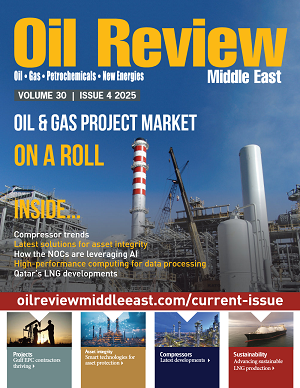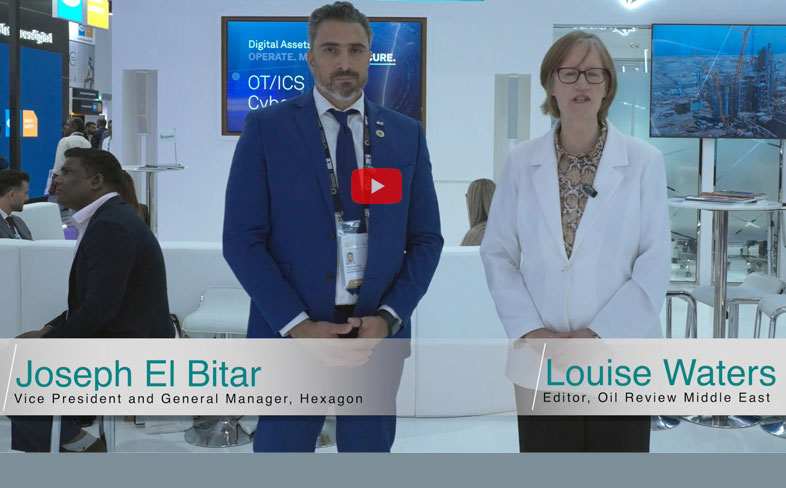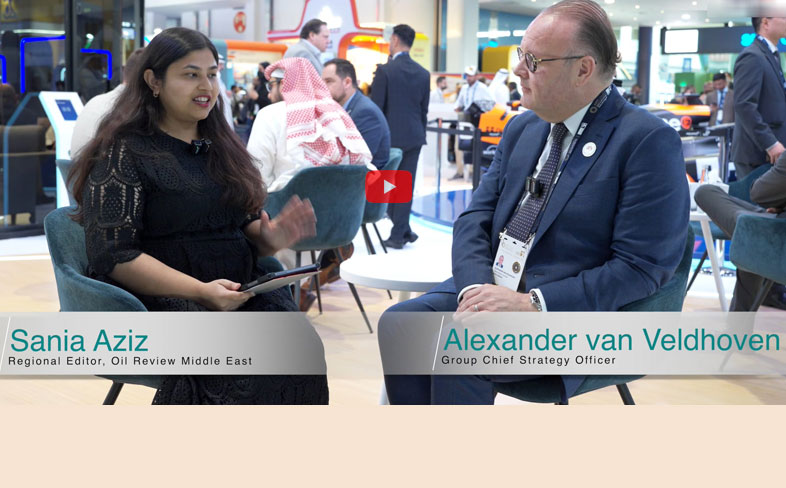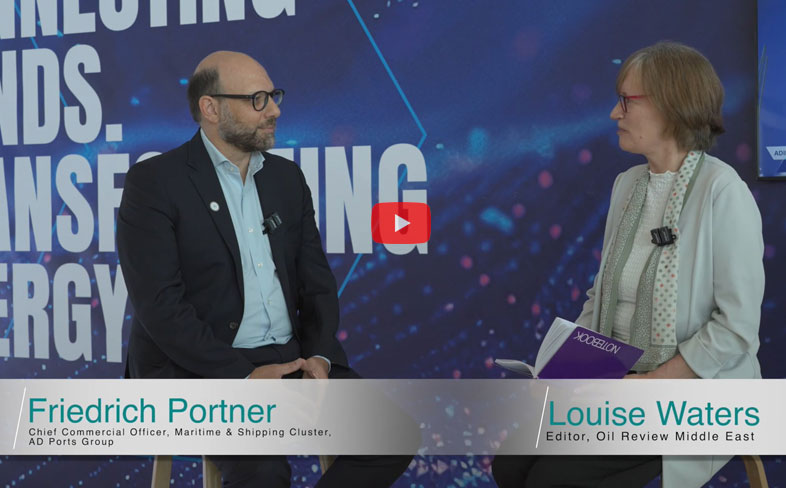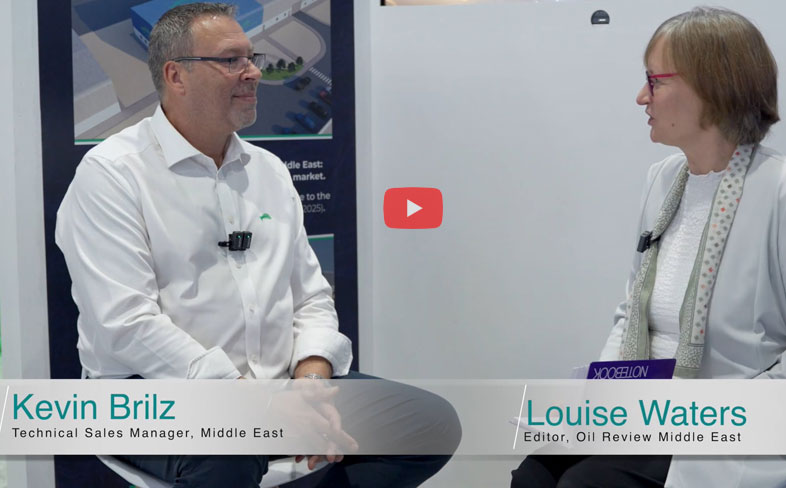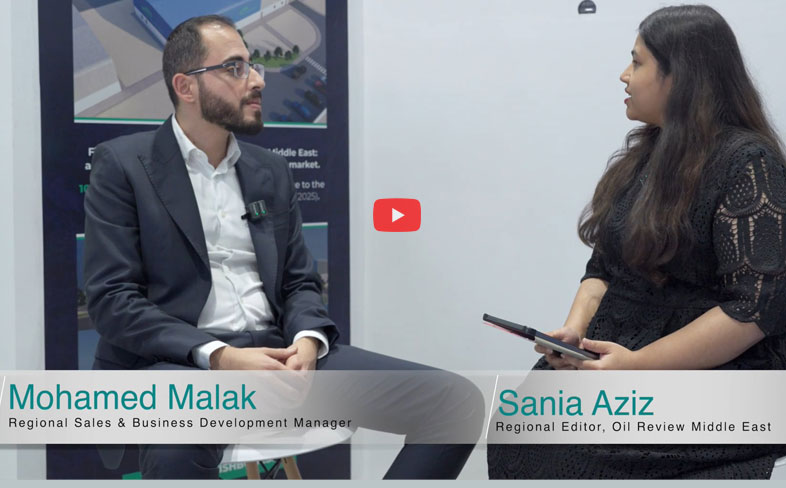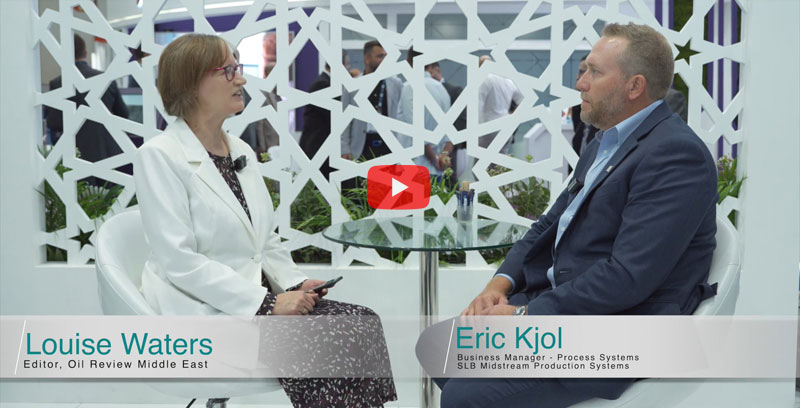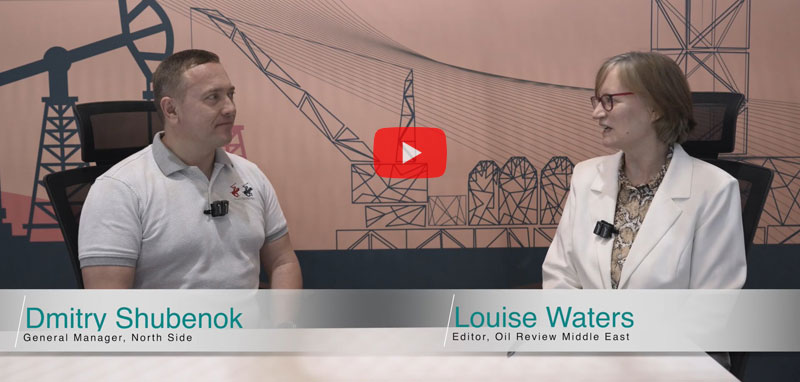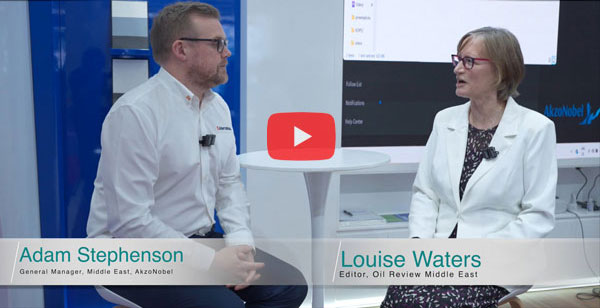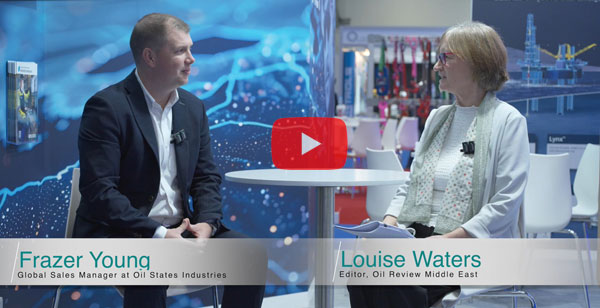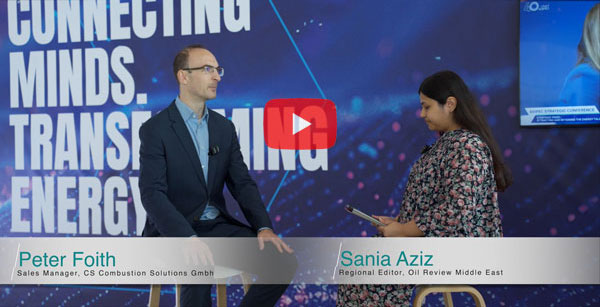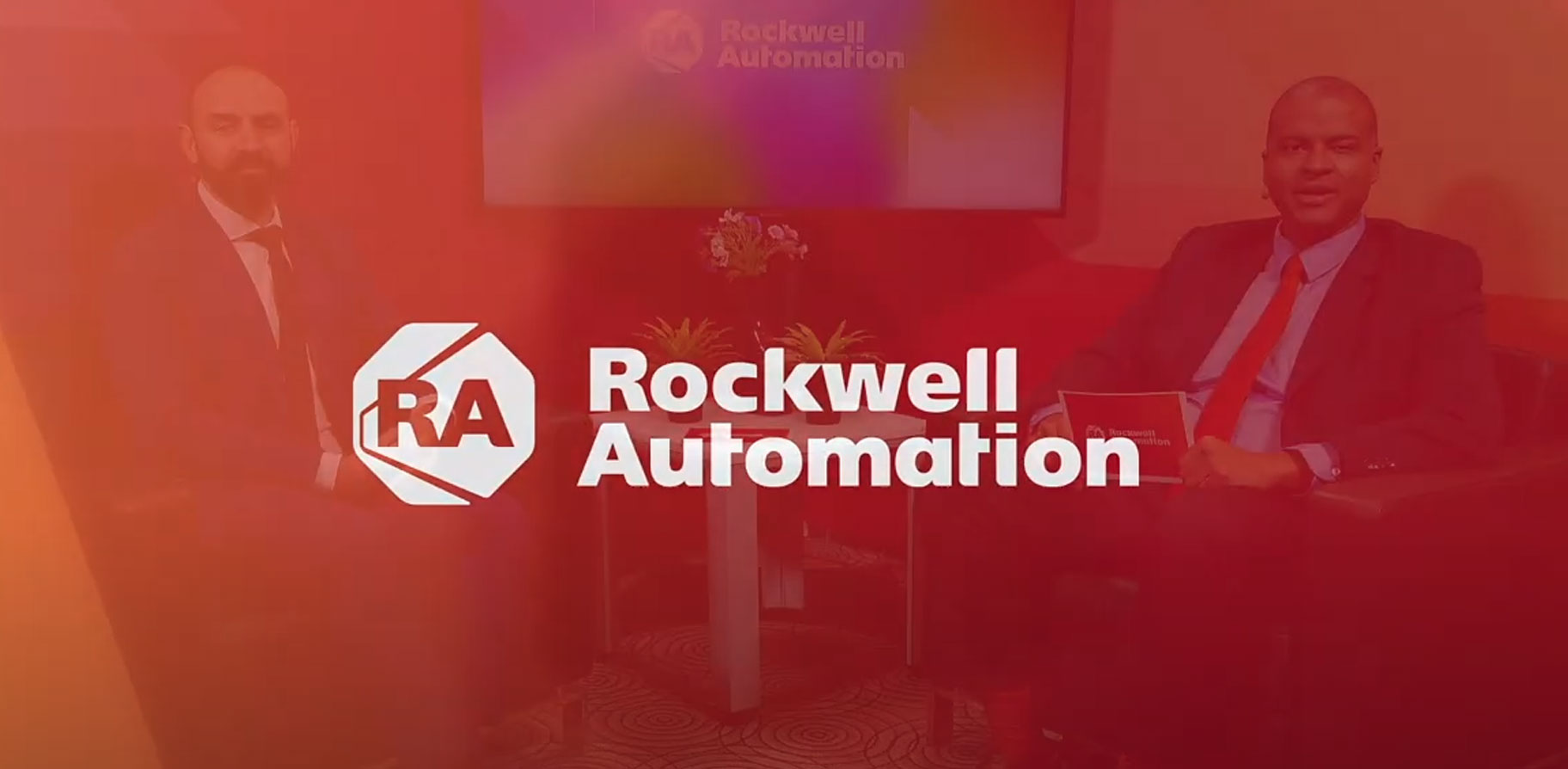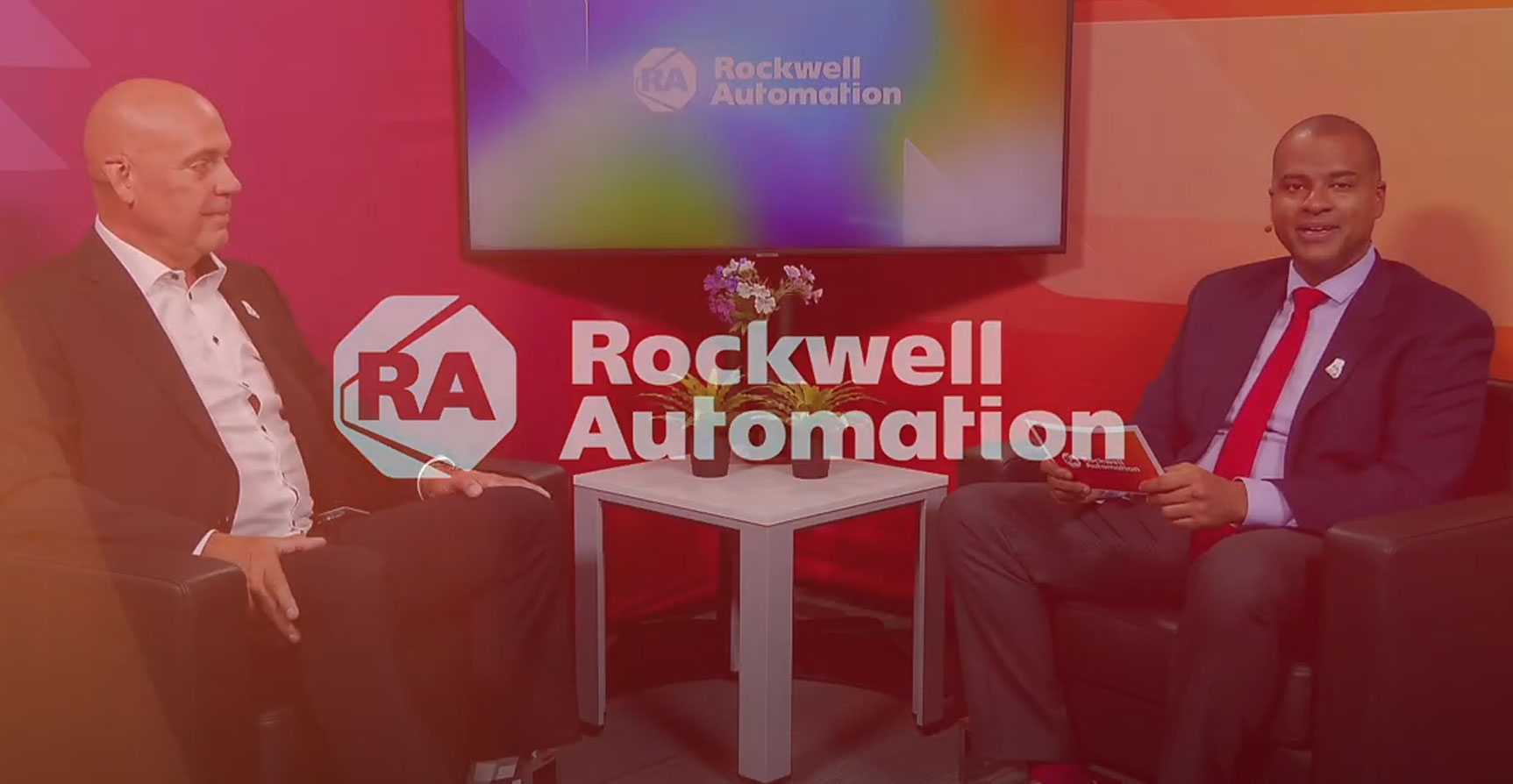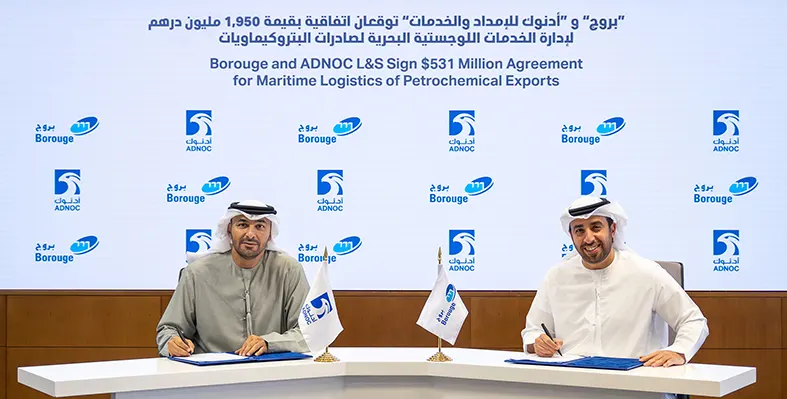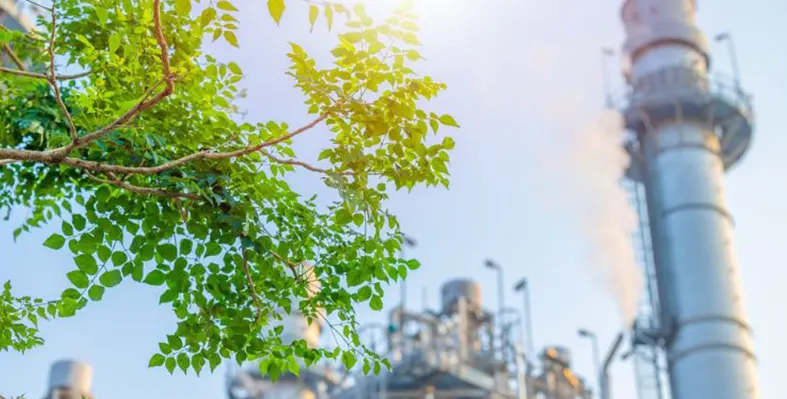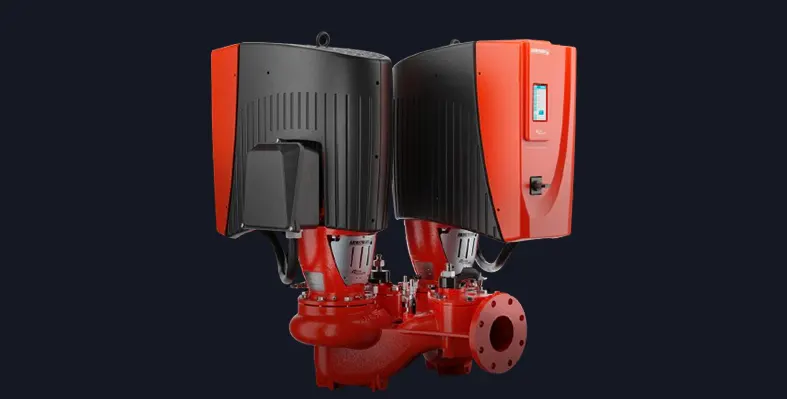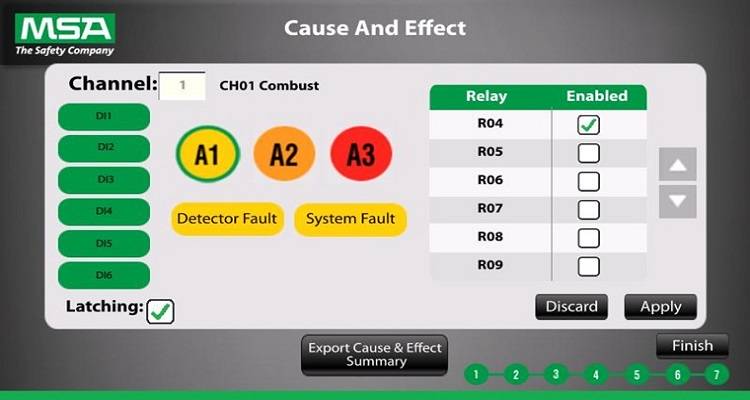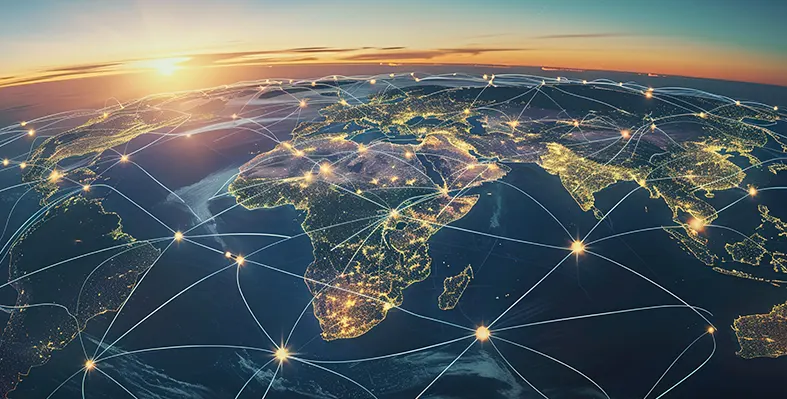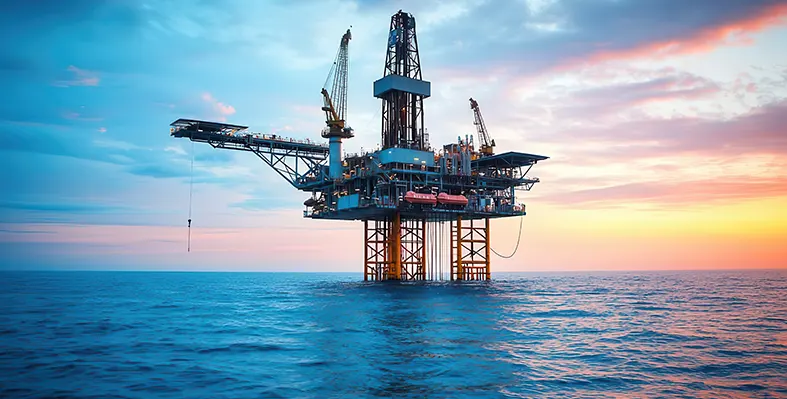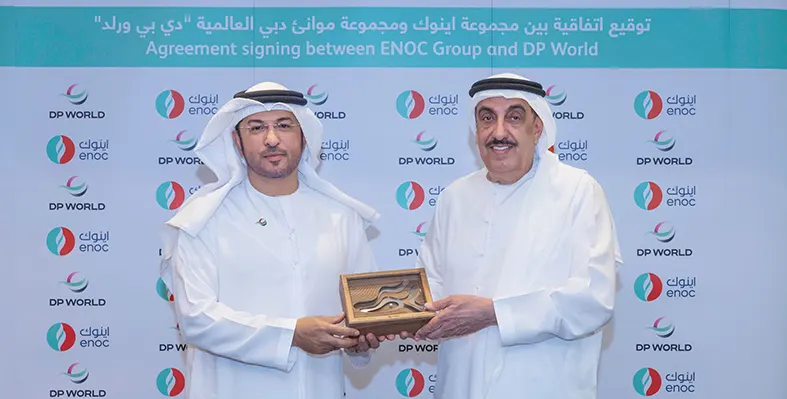In The Spotlight
Middle East on track to become second-largest gas producing region in 2025
The Middle East is set to overtake Asia to become the world’s second-largest gas producer in 2025 after North America, according to Rystad Energy research and analysis
Gas production in the Middle East has grown by about 15% since 2020, as regional producers seek to monetise gas reserves and develop export potential to meet global demand.
The region currently produces about 70bn cubic feet per day (Bcfd) of gas, a figure that is forecast to increase by 30% by 2030 and 34% by 2035 thanks to significant developments in Saudi Arabia, Iran, Qatar, Oman, and the UAE. By 2030, the region will add another 20 Bcfd, around half of which will be needed to meet rising domestic demand, with the rest available for export to Europe – which is keen to reduce its reliance on Russian energy – and fast-growing markets in Asia. Iran is currently the Middle East’s leading gas producer, at around 25 Bcfd, followed by Qatar at 16 Bcfd and Saudi Arabia at 8 Bcfd. But with Qatar’s production projected to rise nearly 50% to 24 Bcfd, driven by the ongoing development of its massive North Field, the country is expected to overtake Iran as the Middle East’s largest gas producer in the early 2030s.
“As more long-term gas contracts are signed and export volumes rise, the Middle East is on track to become a key energy hub for countries seeking stable and dependable sources of natural gas,” said Mrinal Bhardwaj, senior analyst, Upstream Research at Rystad Energy.
Qatar, the UAE and Saudi Arabia are leading this growth, with Qatar’s ambitious North Field expansion set to boost its LNG capacity by 80%, from 77 to 142 million tonnes per annum (Mtpa) by the end of the decade, while maintaining a competitive breakeven price of under US$6 per MMBtu.
“A drop below US$6 per MMBtu is not ideal for investments, but Middle Eastern projects remain highly resilient due to their low breakeven costs, typically below US$5 per thousand cubic feet. Even in a prolonged low-price environment, we expect strong production growth from the region. While some final investment decisions could be delayed in such a scenario, the overall impact on output should be limited,” added Rahul Choudhary, vice president, Upstream Research at Rystad Energy.
Rystad expects investments of more than US$50bn in the region’s LNG developments, as the region looks to strengthen its position in the global LNG market, with Qatar adding 48 Mtpa through its North Field East and North Field South projects. The UAE will contribute an additional 10 Mtpa from the Ruwais LNG project, and TotalEnergies is developing the Marsa LNG project with a capacity of 1 Mtpa in Oman. The new volumes of LNG produced in both Qatar and the UAE are primarily earmarked for Asian and European buyers, with Chinese national oil companies and global energy majors emerging as key buyers.
Middle East energy market a magnet for business: EIC
The Middle East is powering ahead of global energy markets and is a magnet for international businesses, thanks to its pragmatic energy investment approach and enthusiastic tech adoption, according to the Energy Industries Council’s (EIC) latest Survive & Thrive report
90% of energy companies operating in the region reported growth in 2024, according to the EIC report, the highest across all regions surveyed, with further growth forecast in 2025. The Middle East recorded the highest average company growth rate at 68%, compared with 20% growth reported by firms in the Americas, followed by the UK and Ireland at 16%, Continental Europe at 13%, and Asia Pacific lagging behind at 8%.
Businesses are flocking to the region, which is increasingly seen as a high-performance zone for energy, buoyed by consistent government support, low business costs, booming project activity and policies that actively reward private sector growth. As the report notes, supply chains are mobile, and companies are increasingly relocating operations and skilled personnel to regions offering policy stability and better returns, the Middle East being the big winner here.
At a time when much of the world is grappling with policy uncertainty, inflation, and talent shortages, the Middle East appears to be charting its own, far more confident course, according to the EIC, the world's leading trade association for companies providing products and services to the energy industry.
“The Middle East isn’t picking winners, it’s investing in all energy technologies,” said Stuart Broadley, CEO of the EIC. "That pragmatism is why it's now the global magnet for talent and capital. This is indeed the right approach to follow for energy security, industry growth, and supporting the energy transition."
While hydrocarbons remain vital, with more than 90% of EIC member companies in the region still focusing on oil and gas, the growth of investment into renewables, hydrogen, and digital infrastructure reveals a willingness to embrace what’s next, without abandoning what works now.
The UAE and Saudi Arabia, in particular, have made aggressive moves not just in oil and gas, but in AI-driven logistics, smart infrastructure, and clean technology.
“Encouraging tech adoption in logistics — like GPS tracking, automation, and AI — would increase efficiency, transparency, and global competitiveness,” said one executive interviewed for the Survive & Thrive report, echoing a broader sentiment that the region is now outpacing even the US and Europe in practical tech adoption.
However, there are challenges. Over 27% of companies flagged local content schemes as a critical issue. While national in-country value (ICV) programmes are designed to boost
domestic participation, the fragmentation across Gulf Cooperation Council (GCC) countries often complicates compliance for multinationals operating regionally. Harmonisation across the GCC could reduce duplication and unlock even greater regional synergies.
Labour localisation is another problematic area, the report shows, with more guidance needed to support the private sector in attracting and retaining local talent.
There is also rising pressure on infrastructure, with around 18% of executives called for smarter logistics parks, dedicated freight corridors, and improved trade infrastructure.
Despite these obstacles, business confidence remains high.
“For many international firms, the equation is simple: go where the work is, and the Middle East has it in abundance,” the EIC says.
The report features 139 success stories and insights from 138 EIC member companies and underscores the need for all regions to learn the lessons of the Middle East.
To view the full report, please visit the following link: https://www.the-eic.com/MediaCentre/Publications/SurviveandThrive
Compressor market set for strong growth
The compressor market is set to grow significantly, fuelled by industrial expansion, energy efficiency, technological advancements and sustainability initiatives
According to a new report from Future Market Insights, the global industrial air compressor market size is projected to grow from US$3.6bn in 2025 to US$ 7.7bn by 2035, registering a CAGR of 7.9%.
In the oil and gas sector, a substantial increase in investments for brownfield and greenfield projects, coupled with planned cross-country pipeline projects, is expected to create positive prospects for growth in demand over the coming years, the report says. In the Middle East and Africa, the expansion of oil and gas, mining, and infrastructure projects is creating new market opportunities.
"The industrial air compressor market is undergoing a transformation, driven by energy efficiency, automation, and sustainability goals. As industries focus on reducing their operational carbon footprint, the shift towards oil-free and variable- speed compressors will define the future of this sector. The expansion of manufacturing activities worldwide, coupled with government incentives for energy- efficient equipment, will ensure steady growth over the next decade," said Nikhil Kaitwade, associate vice president at Future Market Insights (FMI).
New compressor products and services illustrate some of the above highlighted trends. Ingersoll Rand for example has introduced Ecoplant, an advanced compressor controls platform which adjusts compressed air systems dynamically in response to real- time demand changes, using continuous monitoring. This helps to reduce energy costs and the associated carbon emissions through optimised efficiency, as well as to identify any maintenance concerns that need addressing.
Meanwhile AERZEN, which offers advanced solutions for the most demanding applications, has launched two new series: double-stage, oil-free screw compressors (DS series) and single-stage, oil-injected air compressors with permanent magnet motors (SI series). The DS series compressors can provide energy savings of up to 12% compared with the best-performing compressor models currently available in the market.
Burckhardt Compression has launched UP! Detect – an advanced condition monitoring system that offers cost-effective early failure detection. It uses advanced AI algorithms to detect anomalies in the data that warn maintenance personnel on-site of potential issues in the compressor’s components as well as offering actionable suggestions and recommendations. Its new module ‘Predictive Intelligence’ for PROGNOST NT supports operators of reciprocating compressors by reliably predicting the remaining useful lifetime of key components of their assets and the best time for routine maintenance. AI-based predictive algorithms and real- time data are used to maximise equipment availability and reduce Total Cost of Ownership.
See the latest issue of OIl Review Middle East to find out more: https://oilreviewmiddleeast.com/magazines/orme_2025_06_13/spread/?page=14
Houston, USA
SONATRACH inks exploration and development agreement with SINOPEC
SONATRACH and its Chinese partner Sinopec have signed an agreement with a view to assessing and developing hydrocarbon resources in the Basins of Gourara in south west Algeria and East Berkine in the south east of the country
As part of the agreement, the parties will discuss a work programme for the evaluation and exploitation of these resources, integrating best practices for the preservation of the environment and responsible exploitation of natural resources.
“The signing of this Head Of Agreement expresses the willingness of both parties to bolster their existing relationship and expand their cooperation through new partnership opportunities in hydrocarbons exploration and development,” said SONATRACH in a statement.
Sinopec has been present in Algeria since 2002 and operates the Zarzaïtine field with SONATRACH under the framework of a contract of association focusing on hydrocarbon recovery and development.
Sinopec is also SONATRACH‘s partner under the hydrocarbons agreement signed on 25 February 2025 under Law 19-13 relating to the exploration and exploitation of the Hassi Berkane perimeter. The two companies signed a production sharing contract (PSA) for hydrocarbon development and exploration worth US$850mn, and will carry out exploration and appraisal drilling on the licence, which lies 80 km from the huge Hassi Messaoud field.
Algeria is rich in oil and gas resources and offers significant potential. It holds approximately 12.2bn barrels of proven crude oil reserves, making it the third-largest in Africa, along with 159 trillion cubic feet of proven natural gas reserves, and is the largest gas producer in the continent. Around two-thirds of Algeria's territory remains underexplored or underdeveloped.
The country is seeking international investment to boost hydrocarbons production. The National Agency for the Valorization of Hydrocarbon Resources (ALNAFT) unveiled six new onshore licensing opportunities for conventional hydrocarbon exploration in 2024, as part of a five-year licensing plan designed to attract global upstream investors. The six opportunities span a cumulative perimeter size of 152,000 sq. km, supported by over 102,000-line km of 2D seismic data and more than 45,000 km² of 3D seismic data.
In June, TotalEnergies, jointly with QatarEnergy, was awarded the Ahara exploration license following the 2024 bid round. It covers an area of approximately 14,900 sq km, located at the intersection of the prolific Berkine and Illizi Basins.
In early July, Sonatrach signed a PSA with Italy’s Eni to explore and develop the Zemoul El Kbar area in the Berkine Basin, around 300 km east of Hassi Messaoud.
AVEVA to develop software platform for Protium
Green hydrogen company Protium has selected Industrial software company AVEVA to develop its digital industrial intelligence platform for the acceleration of its green energy solution
Protium designs, develops, finances, owns, and operates green hydrogen solutions for clients globally to achieve net zero energy emissions. Protium’s digital industrial intelligence platform will leverage AVEVA software to collect, contextualise, analyse, and visualise asset performance and operations data in an integrated digital twin. This digital twin can also detect faults and perform error analysis while providing critical visibility and insights to the team working throughout Protium’s value chain. With AVEVA’s solutions, Protium will benefit from smart monitoring and control, certified and proven electricity origin, plant operations optimisation, minimised downtime and increased reliability.
Protium is aiming to save 256,000 tons of CO2 per year, and projects that AVEVA solutions will help it save an additional 5-10% by optimising process design and utility consumption.
“Our collaboration with Protium brilliantly illustrates AVEVA’s commitment to enabling industrial sustainability,” commented Caspar Herzberg, CEO, AVEVA. “Leading the transition to net zero through emerging technologies requires flexible digital infrastructure. The data platform we’ve developed for Protium is tailored to manage a resilient and agile digital infrastructure in a cost-effective manner, leveraging the full potential of Protium’s industrial intelligence.”
“Green hydrogen is a key stepping stone in the UK’s ambition to cut CO2 emissions by 1 million tonnes a year by 2030. Achieving this goal cost-effectively and reliably will depend on building the right infrastructure and operating it efficiently. By working closely with AVEVA, we’ve developed the right set of digital tools to enable Protium to deliver green hydrogen at scale – critical at this point when we are about to open a second hydrogen production plant and growing our project portfolio,” added Jon Constable, COO, Protium.
Borouge and Honeywell to collaborate on autonomous operations
Abu Dhabi-based petrochemicals company Borouge is collaborating with Honeywell to conduct a proof of concept for AI-powered autonomous operations, which is is set to deliver the petrochemical industry’s first AI-driven control room designed for full-scale, real-time operation
The initiative aims to deploy the proof-of-concept technologies to enhance Borouge’s operations across its Ruwais facilities in the UAE. Autonomous operations will enable Borouge to optimise production, reduce energy use, and enhance safety while reducing costs at what will be the single largest petrochemical site in the world. Both companies will leverage their expertise in process technology and autonomous control capabilities to identify new opportunities to deploy Agentic AI solutions and advanced machine learning algorithms.
The project is a key component of Borouge's companywide AIDT programme, which is projected to generate US$575mn in value this year. In 2024, Borouge’s portfolio of over 200 AIDT initiatives—spanning operations, health and safety, sales, sustainability, and product innovation—generated $573mn in value
Borouge has already installed the world’s largest Real-Time Optimisation (RTO) system across three large-scale ethane crackers and 20 furnaces. The initiative analyses over 2,500 parameters per minute, enabling instant data-driven decisions, significantly enhancing productivity, optimising energy consumption and reducing emissions. The unique system minimises ethane dumping and optimises resource use, in line with Borouge's commitment to sustainable growth and operational excellence.
Borouge has invested in its state-of-the-art Innovation Centre located in Abu Dhabi and is now using advanced AI-powered tools to accelerate innovation, enabling the company to bring new grades of advanced polymers to market quicker. In collaboration with ADNOC AI Lab, Borouge has completed its first “Polymer Optimisation” programme, achieving a 97% accuracy, enabling Borouge to reduce its development timeline from months to weeks.
Hazeem Sultan Al Suwaidi, chief executive officer of Borouge, said, “Borouge's AI, Digitalisation, and Technology (AIDT) transformation programme is setting new standards in operations, innovation and business performance. By collaborating with global AI leaders such as Honeywell, we are accelerating growth, driving efficiency, and enhancing shareholder value. This project further strengthens Borouge’s competitive edge as we continue to deliver on our ambitious AIDT roadmap.”
George Bou Mitri, president of Honeywell Industrial Automation, Middle East, Turkey, Africa, Central Asia, said, “By integrating AI and automation technologies into core operations, we are helping unlock new levels of efficiency, safety, and performance. This agreement shows how advanced technologies, applied with purpose, can reshape industrial operations at scale.”
Transforming oil and gas in the Middle East through AI and data
Mohamed Zouari, general manager for the Middle East, Africa, and Turkey at global AI and data cloud company Snowflake, argues that the future of oil and gas hinges on integrating AI and data throughout the value chain
Energy, the driver of the global economy, is undergoing one of the largest shifts of our time, propelled by hundreds of trillions of dollars in global investment over the next 25 years. The Middle East, home to the world's lowest-cost producers and the largest reserves, is positioned at the heart of this transformation. According to OPEC, the region is forecast to provide nearly 60% of global oil exports by 2050.
Against this backdrop, Middle Eastern nations are embedding digital transformation in their national strategies. The UAE’s forward-thinking initiatives, like Masdar City, alongside Saudi Arabia’s giga projects under Vision 2030, illustrate the regional ambition to lead in innovation. With oil exports comprising about 30% of the UAE’s GDP alone, the stakes are high. Data and AI are emerging as vital tools in this evolution, enabling companies to modernise infrastructure, generate real-time insights, and align operational decisions with long-term business objectives. As energy companies navigate this landscape, data and AI are becoming critical enablers for growth, operational excellence, long-term resilience and informed strategy across the oil and gas value chain.
Navigating the digital age
While the opportunity is immense, oil and gas companies face several critical challenges on the path to transformation.
One major obstacle is the need to digitise ageing infrastructure. Decades-old grids and oil wells must now integrate with millions of IoT-enabled assets like wind turbines and solar panels, creating an influx of zettabytes of operational and information technology data that requires efficient ingestion, cleaning, and analysis to drive smarter, faster decision-making.
Extreme weather, geopolitical dynamics, and the variability of renewable energy sources are contributing to more volatile commodity markets. Stable long-term contracts signed with countries like China, Japan, and India offer some security, but sophisticated data analytics are crucial to managing financial exposure and mitigating risks. Enhanced by AI and ML, predictive models can now draw on both internal and external data sources to forecast price fluctuations and demand trends more accurately, helping companies navigate volatile markets with greater confidence.
Corporations now demand rigorous environmental, social, and governance (ESG) reporting, while consumers seek intuitive, tech-driven home energy systems. Energy service providers – from utilities to oil and gas firms – must be agile, transparent, and responsive or risk falling behind.
Compounding these challenges is the overwhelming volume of unstructured data, which now represents 90% of all data according to Snowflake’s Data Trends Report. Without a centralised, secure, and scalable data infrastructure, energy companies will struggle to extract actionable insights.
AI and data strategies in practice
Modern AI and data strategies are offering new pathways to navigate this complex environment. Organisations are moving beyond traditional data management toward platforms that can unify siloed information, enable seamless collaboration across ecosystems, and deliver near real-time insights at scale.
At the core of this transformation is the ability to bring together operational, financial, and customer data into a unified environment. By doing so, oil and gas companies gain a single source of truth that supports more informed decision-making across their entire value chain – from field operations to trading desks to customer-facing platforms.
AI is also fundamentally reshaping how companies approach forecasting, maintenance, and customer engagement. Machine learning models are increasingly used to detect anomalies in equipment performance, allowing for predictive maintenance that minimises costly downtime. In trading operations, AI-driven models help forecast commodity prices with greater accuracy, enabling companies to optimise their portfolios and manage risk proactively.
For personalised customer engagement, companies can leverage real-time customer data and generative AI capabilities to deliver tailored recommendations and intuitive energy management solutions, improving satisfaction and loyalty in a highly competitive market.
Organisations that focus on building robust data foundations are better positioned to drive tangible outcomes, from optimising asset utilisation to accelerating sustainability initiatives. Snowflake’s research shows that 92% of early adopters have already realised a return on their AI investments, and 98% plan to increase AI spending in 2025.
With AI’s contribution to regional economies forecast to grow between 20% and 34%, AI is becoming a blueprint for the next generation of energy operations. The ability to seamlessly integrate and analyse vast, diverse data sets in real time is becoming a decisive competitive advantage.
The next chapter
By embracing AI and modern data strategies, oil and gas companies can digitise operations, manage volatility, anticipate customer needs, and chart a course for long-term resilience and growth – a necessary shift as fragmented data infrastructures and talent shortages remain real hurdles.
In a world increasingly defined by energy transition, those who invest early in scalable data and AI capabilities will not just survive – they will lead. The region’s commitment to digital innovation positions it well to remain a global energy powerhouse well into the future.
SAFEEN Group webinar addresses future of offshore operations
Oil Review Middle East hosted a very well-attended webinar on 20 November on the future of offshore operations, in association with SAFEEN Group, part of AD Ports Group
The webinar explored the latest trends and challenges in the rapidly evolving world of offshore operations, focusing on groundbreaking innovations that are driving sustainable and efficient practices. In particular, it highlighted SAFEEN Green – a revolutionary unmanned surface vessel (USV), setting new benchmarks for sustainable and efficient maritime operations.
Erik Tonne, MD and head of Market Analysis at Clarksons, gave an overview of the offshore market, highlighting that current oil price levels are supportive for offshore developments, and global offshore capex is increasing strongly. The Middle East region will see significant capex increase over the coming years, with the need for rigs and vessels likely to remain high. Offshore wind is also seeing increased spending. Global rig activity is growing, while the subsea EPC backlog has never been higher, with regional EPC contracts seeing very high activity. Tonne forecast that demand for subsea vessels and other support vessels will continue to increase.
Tareq Abdulla Al Marzooqi, CEO SAFEEN Subsea, AD Ports Group, introduced SAFEEN Subsea, a joint venture with NMDC, which offers reliable and innovative survey, subsea and offshore solutions to support major offshore and EPC projects across the region. He highlighted the company’s commitment to sustainability, internationalisation and local content, and how it is a hub for innovations and new ideas, taking conceptual designs and converting them to commercial projects. A key project is SAFEEN Green, which offers an optimised inspection and survey solution.
Tareq Al Marzooqi and Ronald J Kraft, CTO, Sovereign Global Solutions ME and RC Dock Engineering BV. outlined the benefits and capabilities of SAFEEN Green as compared with commercial vessels, in terms of safety, efficiency, profitability and sustainability. It is 30-40% more efficient through the use of advanced technologies, provides a safer working environment given it is operated 24/7 remotely from a control centre, and offers swappable payload capacity. Vessels are containerised and can be transported easily to other regions. In terms of fuel consumption, the vessel is environment-friendly and highly competitive, reducing emissions by 90% compared with conventional vessels, with the ability to operate on 100% biofuel.
As for future plans, SAFEEN Green 2.0 is under development, which will be capable of carrying two inspection work-class ROVs simultaneously. A priority will be to collect data to create functional AI models for vessels and operations, with the first agent-controlled payload systems in prospect by around 2027.
To view the webinar, go to https://alaincharles.zoom.us/rec/share/mNHjZhAhQzn1sPzmFWZCgrq7_SckfLRcSb4w81I7aVlokO9sgHM_zVeOqgN3DgJS.bO4OIRqNeFP09SPu?startTime=1732095689000
Oil and gas companies driving CCUS development
Oil and gas companies are playing a leading role in the development of carbon capture, utilisation, and storage (CCUS) according to a new report from GlobalData
CCUS is widely gaining credence as an important energy transition strategy, given its potential to decarbonise hard-to-abate sectors such as cement, steel, refining, and thermal power generation.
As of 2024, more than 70% of the operational and planned CCUS facilities were associated with energy assets, according to the GlobalData’s Strategic Intelligence report, “Carbon Capture and Storage", indicating a growing commitment by the energy sector to reduce its emissions intensity through innovation in carbon capture and storage technologies. The global energy sector accounted for more than 50 commercial-scale carbon capture projects as of 2024, representing a cumulative carbon capture capacity of approximately 45 million tonnes per annum (MTPA). If all the proposed projects come to fruition, the global carbon capture capacity in the energy sector could rise to nearly 316 MTPA by 2030.
Leading oil and gas players such as ExxonMobil, Occidental Petroleum, and Equinor have taken early initiatives in CCUS, supported by engineering and service companies like Technip Energies, Mitsubishi Heavy Industries (MHI), and SLB. These firms are leveraging their expertise in industrial-scale project delivery to develop and execute carbon capture strategies across upstream and downstream operations. For example, Shell Catalysts & Technologies has signed an agreement with Technip Energies to deliver a post-combustion amine-based carbon catpure solution using Shell's CANSOLV CO2 capture system, designed to make carbon capture more investable, scalable and accessible for industrial sectors and helping hard-to-abate industries to decarbonise.
According to GlobalData’s report, there are 17 carbon capture projects in advanced stages of development that are expected to begin operations later this year. Additionally, around 460 capture projects are under development globally across diverse industries, which will lead to significant capacity growth through 2030.
Middle East CCUS leadership
The Middle East is emerging as a major region for CCUS development. The UAE’s ADNOC operates Al Reyadah, the world’s first commercial scale operation to capture and store CO2 from the steel industry, with a capacity of 800,000 tonnes a year. Further projects are planned and underway such as Habshan, which will have a capture and storage capacity of 1.5MTPA and is set for completion in 2026. CO2 will be injected and placed for permanent storage in ADNOC Onshore’s Bab Far North Field, southwest of Abu Dhabi. ADNOC aims to capture and store 10MTPA of CO2 by 2030. Meanwhile while Aramco has a target of 14 MTPA by 2035, and is developing a major 9MTPA carbon capture hub at Jubail with SLB and Linde, set to be one of the largest in the world.
Ravindra Puranik, Oil and Gas analyst at GlobalData, commented, “Unlike consumer-driven clean energy trends, CCUS adoption is largely influenced by regulatory and economic frameworks, with limited visibility to end users. Policies such as the EU Emissions Trading System (ETS), Canada’s carbon pricing mechanism, and the US 45Q tax credit have been instrumental in unlocking commercial opportunities for CCUS. These frameworks have helped offset the high capital and operational costs of CCUS deployment, particularly in energy-intensive industries, and are driving the emergence of large-scale projects globally.”
Puranik noted however that CCUS still faces a range of challenges that threaten to hamper its scale-up, such as high upfront costs, the lack of fully developed CO₂ transport and storage infrastructure, and limited commercial applications for captured CO₂. Retrofitting existing facilities often adds further complexity, making project economics difficult without consistent policy support.
“Additionally, regulatory uncertainty around permitting processes, cross-border CO₂ transport, and long-term liability for stored carbon continues to pose risks for investors. Public scepticism also persists, with some critics viewing CCUS as a strategy to extend the life of fossil fuels rather than as a legitimate tool for emissions reduction. The absence of standardisation and the fragmented nature of the CCUS value chain further limit the ability to implement integrated, scalable solutions.”













